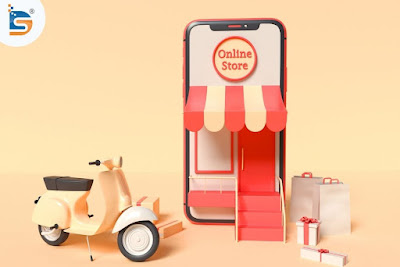Challenges and Solutions of UX Design in e-Commerce
What factors have the potential to make or break an e-commerce website? Do you know how well your e-commerce site is doing? Are you thinking of redesigning your website? This is an excellent opportunity to assess, investigate, and rebuild your e-commerce offering in light of current trends.
The easier you make your e-commerce website to trust, shop, and buy, the higher your ROI and repeat customers. And when we talk about purchasing, it might be anything. Today's e-commerce websites sell anything from memberships to digital libraries and even crowdfunding!
Ecommerce site design is one of the most subtle ecommerce digital marketing methods. Few people recognize that design elements function quite well, resulting in word-of-mouth marketing.
Your ecommerce web design is critical for generating a strong first impression on your website visitors, capturing their interest, keeping them on the website, and even converting them into customers.
If your website isn't optimized for sales, no matter how excellent your marketing efforts and ads are, you'll merely burn a hole in your wallet since you'll lose potential clients. Many aspects of the user experience, such as website speed, responsiveness, design consistency, media optimization such as picture compression, ease of navigation, and others, have been incorporated into ecommerce website SEO techniques.
What is e-Commerce?
e-Commerce (Electronic Commerce) is the direction of business activity when the process of providing customers with goods or services is done by means of electronic devices and the Internet.
This sort of communication and finalization of sales adds some new aspects to data management, sales channels, advertising, presenting goods and services, and moreover — enabling a full cycle of commercial operations, including payments, delivery, and refunds.
In e-commerce stores, it is online, and in brick and mortar stores, it is offline. The basic objective remains to give clients a pleasurable and simple buying experience. The goal of eCommerce UX design is to make the user's interaction with the e-commerce platform easy, intuitive, and speedy.
The Importance of UX Design in E-Commerce
The success of an e-commerce store is determined by three factors. They are as follows:
The standard of the product or service being sold
The approach in which clients are presented
The e-commerce platform's design
The design has a direct impact on customers and can make or break a conversion. Fast feedback, intuitive navigation, compelling product information, and other design elements all play a significant influence on e-commerce purchases.
The design is vital not only to attract and impress first-time customers but also to improve the user experience of existing users, encouraging them to return to your business for future transactions.
The only way a user may evaluate a product on an e-commerce platform is through the information displayed on the screen. Even if you are selling a high-quality product, if you cannot clarify it through product photographs or descriptions, clients are unlikely to purchase it.
Challenges of Creating A Great E-Commerce Website Design
The daily obstacles of website design for both developers and website owners originate from uncertainty regarding the necessity of certain design features. Since mobile devices took over e-commerce, it has become increasingly difficult to distinguish between design components and functions that improve user experience (UX).
1. Choose a responsive design for your website
Responsive templates have been available for quite some time. The average e-commerce website receives almost 60% of its organic traffic from mobile phones. Unless you are experiencing a dearth of experienced counsel, there is just no excuse for business owners to not choose a mobile-optimized design. It will be tough to construct a responsive website without the help of an experienced team of ecommerce website development specialists.
Develop mobile-friendly websites that are speedy and easy to navigate.
Rendering data tables on small displays of varied sizes.
Rearrangement of dynamic design elements for devices of varying sizes.
Prolonged durations of designing, testing, and development.
2. Keeping the e-commerce site informational while yet loading quickly
Once you've solved the barrier of establishing a responsive yet fast-loading site, you'll need to address loading speed issues when your e-commerce site grows in size. People like websites that load in under 2 seconds. When a website takes more than 3 seconds to load, visitors begin to fidget and frequently go to a competitor's page.
Google considers page loading speed to be one of the top three ranking factors. It has a significant impact on the UX. E-commerce sites frequently fail this test because they fail to maintain their backend load as small as possible. The increasing number of items and their details necessitates the inclusion of plug-ins. Continuously increasing bulk on the backend can be one of the most difficult difficulties for e-commerce platforms.
3. Creating unique and informative material
E-commerce sites frequently overlook the importance of website content quality. However, this appears to be a recurring issue among sites that do not rank well despite offering outstanding products, deals, and promotions. Direct product promotion is no longer effective.
Almost every website requires a dedicated content staff to provide them with fresh, creative, and helpful content. In reality, a superb content strategy will always be a possibility for your future content marketing initiatives. Webmasters frequently face difficulties in creating lucrative content that appeals to both search engine algorithms and human users.
4. Developing navigation that functions as a guide system
Creating excellent navigation for your e-commerce site does not necessitate the addition of an absurd number of alternatives. According to research, people who browse websites in their spare time dislike having too many options. If you provide them with too many menu options, you will confuse them rather than delight them. You must make your navigation simple and unidirectional. Here are a few things to think about before beginning work on your website navigation options. –
Using your design pieces, create different visual hierarchies.
Colors and patterns should be used to make the clickable options stand out.
Remove any distractions.
Divide the pages into discrete sections.
While designing a pleasant UX, stick to conventions.
5. Creating CTAs that draw attention and increase client conversion rates
A good CTA design can help to define your UX. Your e-commerce site's landing page performs two unique functions —
To describe the purpose of the website
To encourage visitors to progress through the sales funnel
The main characteristics of a successful CTA should be a visible color and typeface. You should only utilize the primary action once on the page. For greater visitor replies, use traditional button versions such as "Buy Now," "Shop Now," "Start," "Register," or "Add to Cart." Using traditional buttons that clearly express their purpose always increases conversion rates.
The success of an e-commerce store is heavily reliant on website design. The distinction between website design and user experience has been increasingly blurred in 2018. Modern website designers strive to keep their designs clean and light by removing components that serve no function.
Solutions for e-Commerce Website Design
For obvious reasons, user experience (UX) design has become an essential component of the eCommerce application development process. According to prominent UX criteria when building an eCommerce software increases usability and consequently plays an important role in improving online sales. Let's get started by looking at the top UX Solutions for eCommerce application development.
1. Responsive UI Elements
Businesses must pay close attention to all areas of the user interface (UI) while designing an eCommerce app or website. It is vital to ensure that all UI elements are fully functioning and responsive. The important feature of user experience (UX) design that contributes to higher levels of client engagement is responsiveness. As a result, it dramatically enhances both online sales and the number of repeat visitors to your online store.
2. The flow of navigation must be smooth
Providing a fluid navigation flow is an important aspect of an eCommerce website's UX strategy that has a substantial impact on the overall user experience. A website with complicated navigation elements is less likely to pique visitors' interest, resulting in increased bounce rates and shorter session duration. As a result, eCommerce business owners must optimize their website and mobile app to provide a smooth navigation flow.
3. The Mobile-First Strategy
It should come as no surprise that mobile devices account for the vast bulk of online purchases today. By 2021, global online sales via mobile devices are expected to exceed $3.56 trillion. It is critical to optimize your website for mobile devices in addition to establishing an eCommerce mobile app. You might live without a mobile app for a while, but having a mobile-friendly eCommerce website is a must for all businesses.
4. The information on the website must be up to date.
Creating a business website is merely the first step in ensuring your brand has an online presence. Making a website successful, on the other hand, demands extreme diligence and months of hard work. It all starts with search engine optimization, on-site/off-site SEO, link building, and social sharing.
Maintaining a website with relevant material and information is a necessary part of all of these procedures. It is critical to consistently update your website with the most recent in-stock items, high-quality product photos, and information about exciting bargains and offers.
Final Thoughts
Knowing the value of your product and understanding your customers is a crucial aspect of overcoming business difficulties with UX design (their wants, needs, etc.). These are some of the most effective UX strategies that have a big impact on an eCommerce app's conversion rate. Above all, it is vital that your website be designed in such a way that your clients can simply find the things they are looking for.
Furthermore, for greater user convenience, you must offer one-click checkout features as well as all prevalent payment options. At the same time, it is critical to stay up to date on the current UI/UX trends and to update your website on a regular basis. In some cases, various retail businesses may decide to redesign their eCommerce website in order to increase their performance and usability.




Comments
Post a Comment